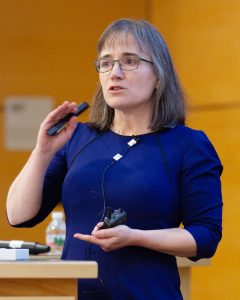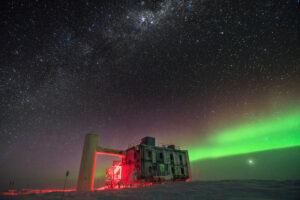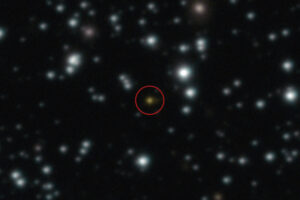Peter Gibbs: 1924-2019
It is with great sadness that the College of Science announces the passing of Peter Godbe Gibbs. Peter was born Dec 7, 1924 in Salt Lake City, Utah to Lauren Worthen Gibbs and Mary Godbe Gibbs. Peter had three brothers, Edwin, David and William, and one sister, Mary Adele. Peter passed away on July 13, 2019.
In 1953 he married Miriam Starling Kvetensky in Urbana, Illinois. They had 3 children (Doon/Teri (spouse), Victoria and Nicholas/Courtney (spouse)), 5 grandchildren (Colin/Kaitlyn (spouse), Connor/Ale (spouse), Julia, Theo and Alex) and 3 great grandchildren, so far (Nico, Santi and Isla). They remained married until Miriam's death and enjoyed 58 years together.
He is survived by his younger brother, William, and all of his children, grandchildren and great grandchildren.
Perhaps his best-known accomplishment as Chair was creating the Frontiers of Science Lecture Series in 1968, attracting world-renowned scientists across all fields of science to give popular lectures that anyone could understand. In the early days, he attracted well-known scientists, many his friends, by inviting them to ski with us on the weekends, including elaborate dinners at home. Later, as the Frontiers of Science became well-known, the ski weekends were no longer necessary to attract famous speakers. Extremely well-attended, and imitated around the country, these lectures are now an established University Utah Lecture Series.
History
A Lecture Series Spanning Five Decades
The Frontiers of Science lecture series was established in 1967 by University of Utah alumnus and Physics Professor Peter Gibbs. Gibbs and his fellow physics faculty at the U sought to bring notable researchers from around the country to the University to discuss the current “frontiers” in physics research. The larger goal was to present public lectures that would attract attention to important developments in scientific research.

By 1970, the University had hosted 10 Nobel laureates for public Frontiers lectures. By 1993, when Gibbs retired, the Frontiers organizers had hosted another 20 laureates. Today, Frontiers of Science is the longest continuously-running lecture series at the University of Utah.
The first Frontiers event was presented by Peter Gibbs himself, who discussed “Einstein the Sociologist,” on April 1, 1967. Physics Professors David C. Evans, Grant R. Fowles and Jack W. Keuffel presented the remaining three lectures that year. In the meantime, the group worked on scheduling outstanding speakers for the following year.
 Gibbs and colleagues made good on their promise to bring exceptional scientists to campus. During the 1968-69 academic year, eight lectures were held, including ones by C.N. Yang from the University of New York at Stony Brook (“Symmetry Principles in Physics”) and Murray Gell-Mann from the California Institute of Technology (“Elementary Particles”). Nobel laureates gave three of the eight presentations that academic year, and during 1969 as a whole, six of thirteen lectures were given by Nobel laureates. Topics included astronomy, mathematics, anthropology, politics and social issues.
Gibbs and colleagues made good on their promise to bring exceptional scientists to campus. During the 1968-69 academic year, eight lectures were held, including ones by C.N. Yang from the University of New York at Stony Brook (“Symmetry Principles in Physics”) and Murray Gell-Mann from the California Institute of Technology (“Elementary Particles”). Nobel laureates gave three of the eight presentations that academic year, and during 1969 as a whole, six of thirteen lectures were given by Nobel laureates. Topics included astronomy, mathematics, anthropology, politics and social issues.
Gibbs and the early FOS organizers were extremely adept at recruiting famous and soon-to-be-famous scientists. They also were keenly aware of the state of scientific research and the social climate of the time. President Nixon was in office, the Vietnam War was escalating and student protests were common on university campuses including the U of U. The United States had just put a man on the moon. Personal computers did not exist.
 Through the 1970s as many as ten lectures were presented each academic year, but by 1980 the pace had slowed to a more manageable five or six per year. The FOS series had become immensely popular and the topics were broadened to include biology, chemistry, mathematics and the earth sciences.
Through the 1970s as many as ten lectures were presented each academic year, but by 1980 the pace had slowed to a more manageable five or six per year. The FOS series had become immensely popular and the topics were broadened to include biology, chemistry, mathematics and the earth sciences.
In the early 1980s, FOS audiences were treated to firsthand accounts of the discovery of the structure of DNA by James D. Watson (“The Double Helix and Destiny,” 1981) and Francis H.C. Crick (“The Two DNA Revolutions,” 1984), the achievement for which they had received a Nobel Prize in 1962.
 Many FOS speakers were not so famous or honored when they spoke here, but became so later in their career. For example, F. Sherwood Rowland spoke on “Man’s Threat to Stratospheric Ozone” in the 1978 academic year, and was a co-recipient of the 1995 Nobel Prize in Chemistry for his pioneering studies on the destruction of ozone by chlorofluro- carbons which was his topic in 1978!
Many FOS speakers were not so famous or honored when they spoke here, but became so later in their career. For example, F. Sherwood Rowland spoke on “Man’s Threat to Stratospheric Ozone” in the 1978 academic year, and was a co-recipient of the 1995 Nobel Prize in Chemistry for his pioneering studies on the destruction of ozone by chlorofluro- carbons which was his topic in 1978!
From 1994 to 1997, the Frontiers of Science series was complemented by the Davern/Gardner Laureateship. Dean T. Benny Rushing, Biology Professor K. Gordon Lark, and Emeritus Professor Boyer Jarvis wished to honor the memory of two former College of Science faculty members who made extraordinary administrative contributions to the University of Utah: Cedric “Ric” Davern and Pete D. Gardner.
 Rushing, Lark and Jarvis secured a generous grant from the George S. and Dolores Doré Eccles Foundation to fund the Davern/Gardner Laureateship. The Laureateship allowed the College to bring a notable scientist to campus to deliver a public lecture and to interact with research teams and faculty that shared the invitee’s scientific interests. Dr. John Cairns gave the first lecture in November 1994. A total of six Davern/Gardner Laureateship lectures were presented until the grant was exhausted.
Rushing, Lark and Jarvis secured a generous grant from the George S. and Dolores Doré Eccles Foundation to fund the Davern/Gardner Laureateship. The Laureateship allowed the College to bring a notable scientist to campus to deliver a public lecture and to interact with research teams and faculty that shared the invitee’s scientific interests. Dr. John Cairns gave the first lecture in November 1994. A total of six Davern/Gardner Laureateship lectures were presented until the grant was exhausted.
The history of venues for Frontiers of Science presentations is quite colorful. From 1967 to 1970, various rooms were used, including 103 North Physics, 200 Music Hall and Mark Greene Hall in the College of Business. By 1974, FOS events were often held in the Waldemer P. Read auditorium in Orson Spencer Hall. The Read auditorium featured stadium seating for about 400 people and was primarily used through the 1980s.
 By 1990, the Fine Arts auditorium became the venue of choice because it was newer, larger, and had a better sound system. However, the lighting and sound controls were problematic and scheduling conflicts forced organizers to utilize the nearby Social Work auditorium on occasion.
By 1990, the Fine Arts auditorium became the venue of choice because it was newer, larger, and had a better sound system. However, the lighting and sound controls were problematic and scheduling conflicts forced organizers to utilize the nearby Social Work auditorium on occasion.
In the meantime, the College of Science was constructing the Aline Wilmot Skaggs Biology Research Building (ASB) that included a beautiful 325-seat lecture auditorium and an adjoining 125-seat room complete with modern sound systems, digital video projectors and lighting. When ASB opened in 1997, the Frontiers series finally had a home within the College.
 In 2003, the College of Mines and Earth Sciences joined with the College of Science to co-host FOS and increase the number of lectures devoted to aspects of geology, geophysics and meteorology. The effort was successful and a total of five presentations were scheduled, including Paul F. Hoffman, Sturgis Hooper Professor of Geology, Harvard University (“Snowball Earth: Testing the Limits of Global Climate Change,” 2003) and Peter B. deMenocal, Lamont-Doherty Earth Observatory, Columbia University (“Climate Shifts and the Collapse of Ancient Cultures,” 2004).
In 2003, the College of Mines and Earth Sciences joined with the College of Science to co-host FOS and increase the number of lectures devoted to aspects of geology, geophysics and meteorology. The effort was successful and a total of five presentations were scheduled, including Paul F. Hoffman, Sturgis Hooper Professor of Geology, Harvard University (“Snowball Earth: Testing the Limits of Global Climate Change,” 2003) and Peter B. deMenocal, Lamont-Doherty Earth Observatory, Columbia University (“Climate Shifts and the Collapse of Ancient Cultures,” 2004).
In March 2007, Professor Kerry A. Emanuel of MIT discussed the history and science of hurricanes, including how climate change may be influencing storm cycles around the world. He used stunning photos and graphics to explain how hurricanes work, what determines their energy and destructiveness, and the economic and social implications of our policies for dealing with the risks they pose.
 In 2008, The 14th Astronomer Royal of Great Britain, Sir Arnold Wolfendale, graced Utah audiences with a superb presentation on “Time: From Harrison’s Clocks to the Possibility of New Physics.” Other international guests were Dr. Jennifer Graves, Distinguished Professor at La Trobe University, Australia, and Dr. Stefan Hell, Nobel laureate and Director of the Max Planck Institute for Biophysical Chemistry in Göttingen, Germany.
In 2008, The 14th Astronomer Royal of Great Britain, Sir Arnold Wolfendale, graced Utah audiences with a superb presentation on “Time: From Harrison’s Clocks to the Possibility of New Physics.” Other international guests were Dr. Jennifer Graves, Distinguished Professor at La Trobe University, Australia, and Dr. Stefan Hell, Nobel laureate and Director of the Max Planck Institute for Biophysical Chemistry in Göttingen, Germany.






